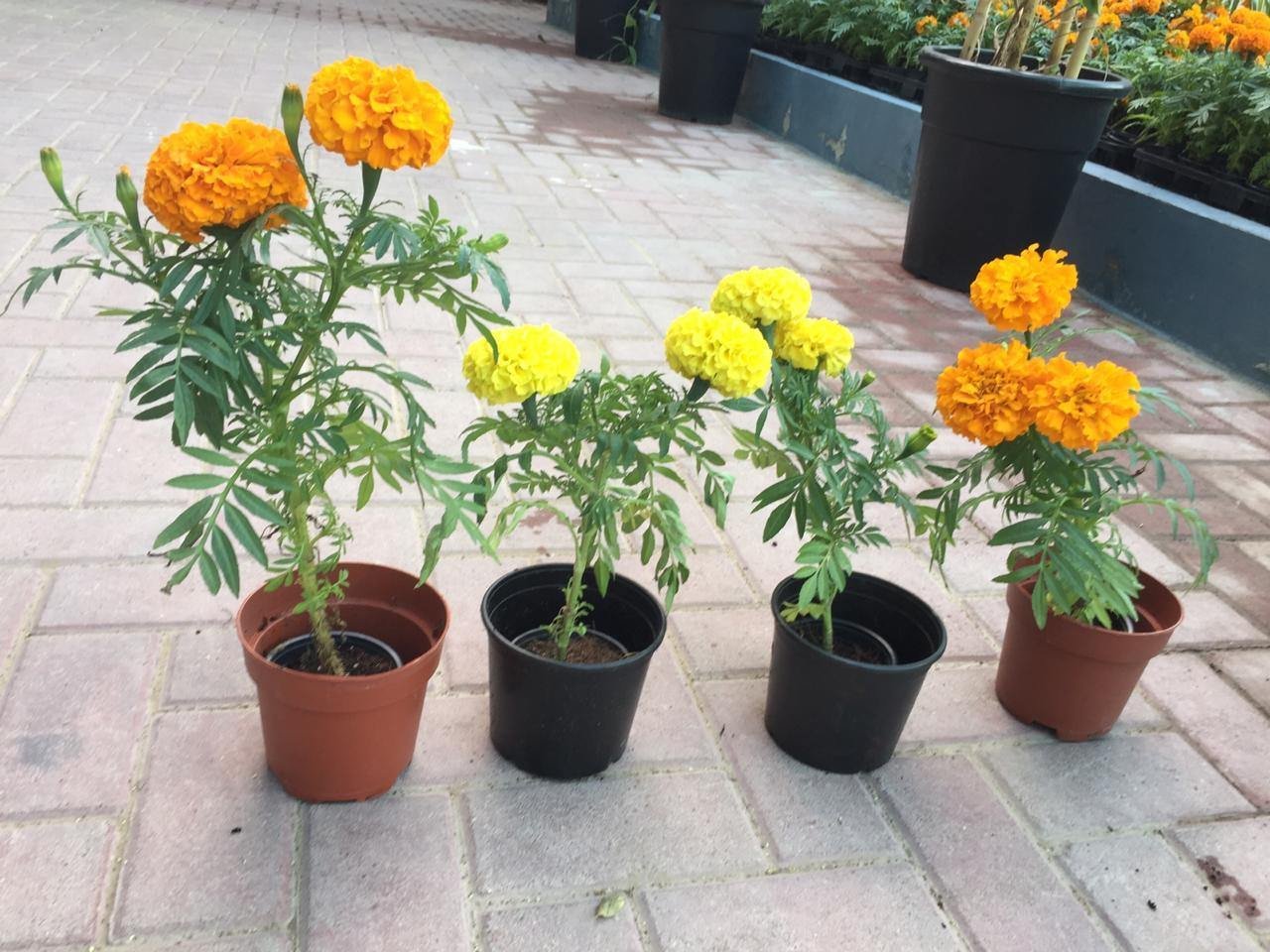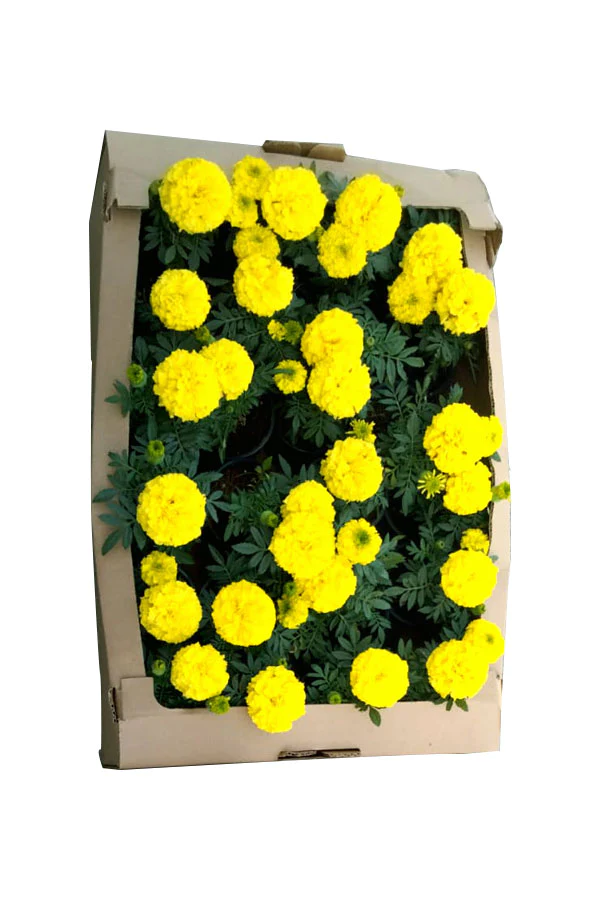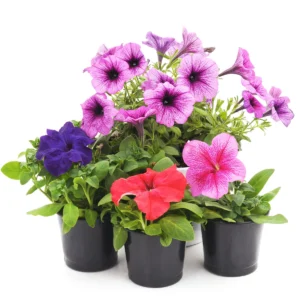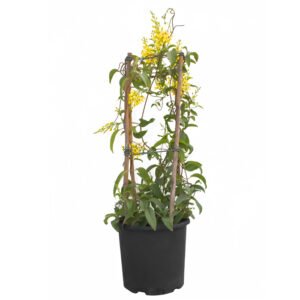No products in the cart.
| Scientific name | Tagetes spp |
| Common name | Marigold |
| Temperature requirement | 25-35 °C |
| Humidity | 40-50% |
| Light | Full sun |
| Watering | Water everyday &keep moist |
| Pests | Snails and slugs, japanese beetles, leafminers, and twospotted spider mites |
| Pet friendliness | Not hazardous |
| Maximum plant height | 90-120cm |
| Potting mix | Potting soil/red soil/manure/perlite |
| Pot requirement | Good drainage&repot every 1-2 years |
| Nutrition | Apply manure for first 15 days and npk for next 15 days |
| Pruning & training | Remove dead & diseased leaves with sterile shears |
| Common color & season | deep orange, golden yellow, lemon yellow, orange, red and gold bicolor, red, and yellow |
| Description | Marigold does best in tropical indian climate, as it is fond of warmth, and plenty of sunlight. Provide some shade in the harsh afternoon sun of summers.Marigold responds best to the 6-7 hours of full sun, though it can tolerate some shade as well. The more light the plant will get, the better the clooms will be.Marigold prefers well-draining, fertile, and well-aerated soil. You can incorporate the garden soil with manure or compost for amending soil quality. For containers, prefer sterilized potting soil or soilless starting mix. Diy it by mixing equal parts of peat moss and perlite or vermiculite.Water the plant when the topsoil feels dry to touch. The plant will require frequent watering during summers. Also, practice watering the plant during the morning hours.Marigolds are not heavy feeders and to boost the plant’s growth, you can use cow dung manure or any balanced fertilizer once in 5-7 weeks. Remove spent flowers by pinching the heads. It encourages the plant to produce more blooms instead of wasting its energy in producing seeds that ultimately extend the flowering season. Snip off the stem back to the nearest set of leaves once the flowers fade. |


























